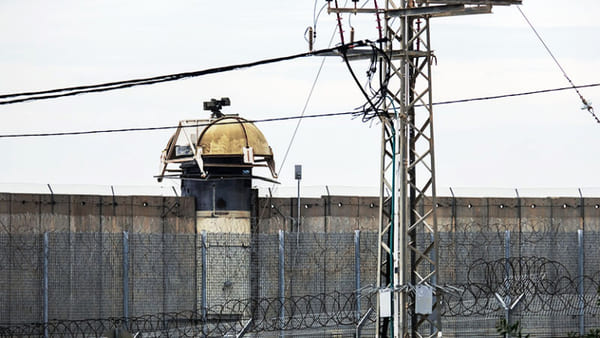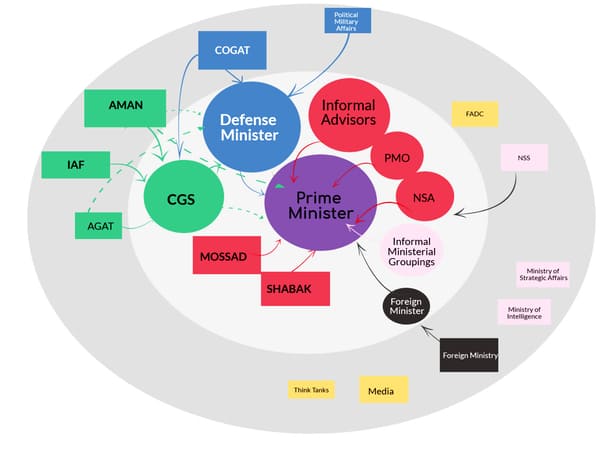
The deadly attack by Hamas on 7 October represents the greatest failure of Israeli intelligence in the country’s 75-year history. At least 1,200 Israelis were slaughtered. But the attack was not just on Israel. Citizens of other countries, including at least 17 British and 22 Americans, were killed. The attack was also, in cold operational terms, a success for Hamas.
When adjusted for Israel’s population size, this attack by Hamas was worse than what 9/11 was for the United States. The attack, on a Jewish holiday, was the darkest day in Jewish history since the Holocaust. Hamas murdered Israeli civilians in cold blood, raped and beheaded victims, and took at least a hundred Israeli hostages to Gaza. Hamas fighters killed babies and parents in their homes. Partygoers at a music festival were slaughtered.
After an estimated 2,000 Hamas fighters breached the Israel-Gaza border in 29 different places, the Israeli security establishment allowed a narrative to form that it had very little or no intelligence about the invasion.
A full reckoning will require months if not years of investigation. Meanwhile, Intelligence failures can arise in at least four different ways:
• Through a breakdown of intelligence collection
• Through a failure of analysis
• Failure on the part of decision makers to listen to intelligence provided.
• When sufficient distance is not maintained between intelligence and policymaking, so that intelligence becomes politicised.
Before Hamas’s attack on Israel, there was, self-evidently, a failure of Israeli intelligence collection. Israeli intelligence, principally Shin Bet and Israeli military intelligence, failed to discover Hamas’s plot from their human intelligence or technical intelligence sources in Gaza. This is surprising since Gaza is one of the most intensely surveilled places on earth.
Hamas resorted to low-tech, old-fashioned, tradecraft that foiled Israeli high-tech capabilities. Its attack was only known to a small number of commanders, who gave orders by word of mouth avoiding live feeds of the border. Israel did not detect whispers of the attack beforehand. Movement near the border zone was a daily occurrence. Use of bulldozers and civilian trucks was common in Gaza. Hamas snipers took out Israeli electronic sensors. Hamas also apparently used electronic cyber capabilities to jam communications of Israeli commands.
There may have also been a failure of analysis. The Yom Kippur War of 1973 was a textbook example of intelligence failure. This time there was a similar analytical failure before Hamas’s assault.
Political Failure
It is not known how much or what intelligence, if any, Israel’s premier, Benjamin Netanyahu, was given before the attack. If it is true that Egyptian intelligence provided the Israeli government with a warning, was it overlooked? Or did Israel’s divided domestic politics contribute to intelligence being ignored?
On October 9, Egyptian intelligence said publicly that it had given Israel repeated high-level warnings of a pending attack before the Gaza-based Hamas struck, including a direct phone call from Cairo’s intelligence minister to Prime Minister Benjamin Netanyahu in late September. US intelligence also warned its own policymakers of unusual Hamas activity and of a general increased threat from Hamas based on multiple streams of intelligence.
Underestimating Hamas’s Capabilities
The assessment about Hamas appears to have been dismissed for three key reasons. First, a belief that Hamas did not have the capabilities to carry out the attack, nor the intention to do so because it would fall outside of their historic pattern of behaviour.
Second, these beliefs about Hamas were not thoroughly challenged within Israeli intelligence nor through sharing the assessment with international partners who might have had useful intelligence on this.
ALSO READ: ISRAEL-HAMAS WAR – Hamas Leadership, Setup and Capabilities
Third, Israeli defences, be they deeply buried sensors, walls, or automatically defended sections of the border, were considered to be too strong for Hamas.
Israel’s feeling of military superiority could have led to complacency, assuming Hamas would not launch a major attack because Hamas could not defeat Israel. Israel miscalculated both Hamas’s capabilities and its intentions-and its own defense capability.
However, Israeli leaders and other observers were well aware that Tehran had been increasing aid to support Hamas for years. Israel nevertheless very clearly underestimated how much such resources boosted Hamas’s current military capabilities and command and control.
Misunderstanding Hamas’s Intentions
Israeli leaders may have calculated that Hamas would not wage such an attack in part because Israel was providing economic incentives for peace (eg, the transfer of Qatari funding to Gaza).
Hamas has been identified as a religious terrorist group with an antisemitic and millenarian mission of jihad to destroy Israel and kill Jews. Hamas’s rise represents the “Islamization of the Palestinian-Israeli conflict.”
Rather than peace, it is likely that Hamas (and its backers in Iran) wanted war, anticipating a major Israeli military response to its October 7 attack, which it could weaponize in information war against the Israelis to gain sympathy for the Palestinian cause internationally and erode support for Israel.
Hamas very likely wanted to provoke an overreaction by Israel that would impair Arab-Israeli “‘normalization’ in the Middle East,” including the ongoing US-brokered talks for a Saudi-Israeli peace deal that had made progress in 2023.
Hamas’s Denial and Deception
Hamas deceived Israel by giving a public impression that it was not willing to go into a fight or confrontation with Israel while preparing for this massive operation. Second, small cell of Hamas operatives communicated for two years via hardwired phones embedded in the network of tunnels underneath Gaza; avoided using cells phones and computers in order to evade detection.
Preparations for War Concealed
A CNN investigation analyzed propaganda video and satellite imagery that showed expansion of and increased activity at multiple Hamas training camps in Gaza over the past two years.
It is believed that Israeli military intelligence had collected specific information on how Hamas could invade. From observing rehearsals they also had information about the level of violence Hamas terrorists were willing to inflict.
ALSO READ: EDITORIAL – The Hamas Terrorist Attack of 7 October
Evidence suggests that about a year ago Israeli analysts had a copy of the Hamas attack playbook, the Jericho Wall document, which detailed how Hamas fighters would breach the border using paragliders, drones and rockets, and what they would seek to attack.
Comments
This Israeli failure will be relatable for intelligence agencies around the world. Intelligence analysis is difficult to do accurately, and failures can have huge consequences.
There are two elements of an intelligence assessment: the first is what people, skills, finance and equipment does the adversary possess (capabilities) and, second, what does the adversary want to do with these assets (intentions).
If analysts believed that Hamas could not behave in this way, they would tend to look for intelligence that reinforced that view, and exclude intelligence that refuted it. Assumptions and biases need to be constantly challenged.
Intelligence failures can show where agencies have invested too much resource, while under-investing in human intelligence or analytical techniques. These lessons are hard won, and it is a sad reality of intelligence history that strategic failures often act as drivers of reform and improvement.


















